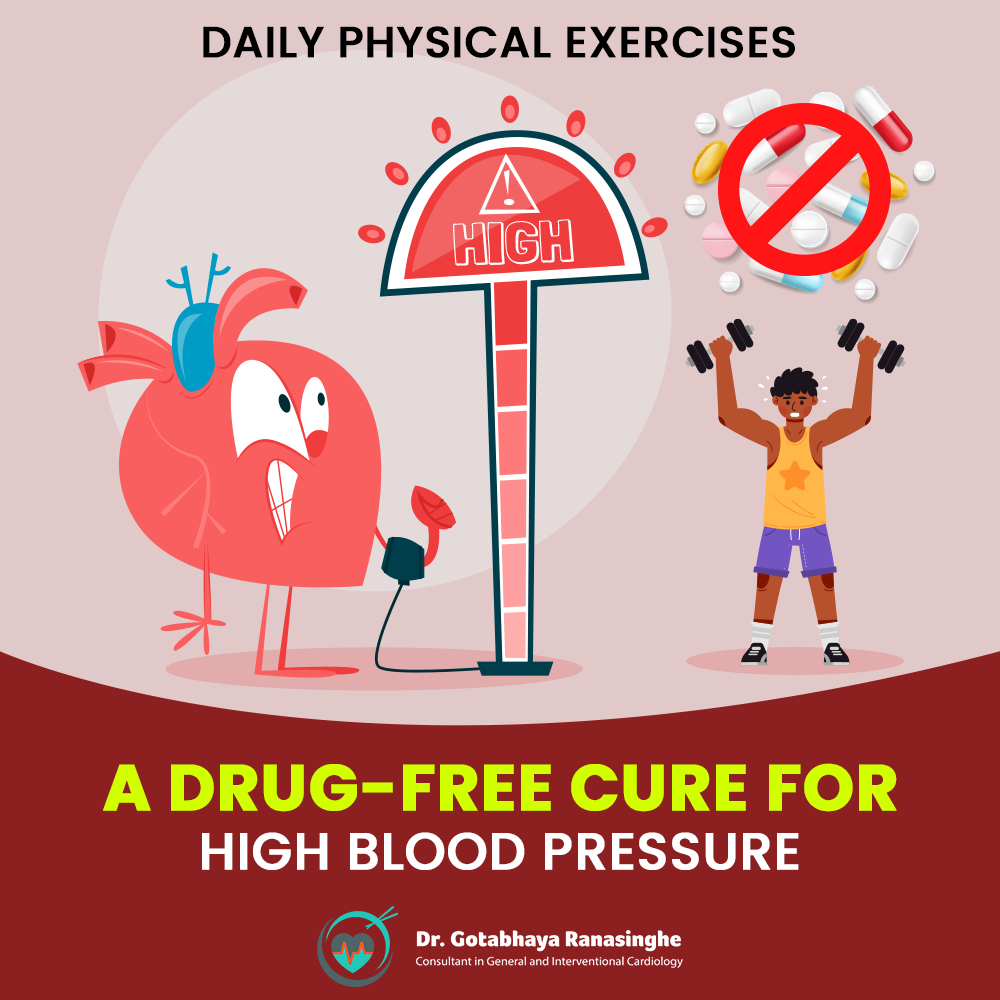Care for a drug-free cure for High Blood Pressure?
Our current lifestyle invites many ailments to steadily parade towards us. High blood pressure is one of these conditions. Are you one to carry a box of medicine wherever you go? Let us see how we can bid adios to a box full of drugs and start enjoying life.
If you are healthy, your blood pressure will be less than 120/80 millimeters of mercury (mm Hg). If your blood pressure is above 140/90 mm Hg, we refer it to as high blood pressure.
Let me explain to you what these two numbers refer to. The first number represents your heart’s contractions to push blood to your arteries. The arteries will stretch to their maximum from the contraction of the heart. We call this the systolic value. Precisely it is the maximum pressure on your arterial system. The second number is called the diastolic reading. When your heart relaxes, the stretch recoils and continues to push blood through. It is the lowest pressure.
Every minute your heart pumps out 5 liters of blood which is called the cardiac output. If you are wondering where all the blood that your heart pumps go to, the blood vessels act as the distributor of blood to many of your organs enabling you to function normally. Out of the 5 liters of blood, the blood vessels to the heart get about 5%, brain – 15%, gut – 25%, kidneys 20%, skin – 5%, and the muscles at rest get 20%, which means 1 liter of blood per minute.
When your arteries thicken and stiffen, they create a resistance for the blood to flow. This resistance is called high blood pressure. Unfortunately, this has become a common condition among both elders and youngsters alike.
I, as a doctor in practice for many years, treating patients with heart diseases, have noticed that a lot of my patients do not have any symptoms indicating high blood pressure before it is too late. It may take years or even decades for any symptoms to appear. That is why high blood pressure is called the “silent killer”.
Additional strain in your blood vessels due to high blood pressure can cause heart attacks, heart failure, strokes, and many other life-threatening conditions.
I’m relieved to say that studies have revealed that particular modalities of exercise with high-intensity interval training such as CrossFit, brisk or moderate walking, biking/cycling, using a treadmill or pedal pushing, swimming, and weight training assures to reduce blood pressure.
When you exercise, you contract your muscles and start using more oxygen and energy in the form of glucose. In order to increase the 1 L of blood distributed earlier to the muscles at rest, the sympathetic nervous system signals the increase of the amount of adrenaline, noradrenaline, nitric oxide, and prostaglandins in blood and aid the blood vessels to relax. The blood flow to the muscles is thus increased to 20 liters per minute when you exercise.
However, once you finish your workout, there is a reflexive drop in the adrenaline and noradrenaline levels, but your body maintains an increase in nitric oxide and prostaglandins which continue to relax and dilate the arteries. While dilating the arteries this function also relaxes the heart, bringing the cardiac output back to normal. This places less pressure on the heart and reduces blood pressure as the heart pumps blood against less resistance from the vessels. Through this mechanism, exercise, especially high-intensity interval training, serves to reduce your blood pressure in the long term.
Hence it is advisable to get at least 45 minutes of physical activity a day, 5 days a week.
Exercise regularly. Enjoy life keeping hypertension at bay!




